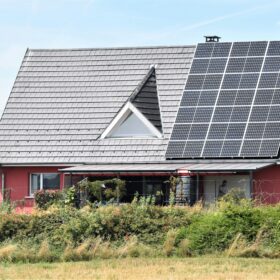Norway records 148.68 MW of new solar in 2024
Norway deployed 148.68 MW of solar in 2024, pushing its cumulative installed PV capacity past 750 MW.
New rules allow VPPs to compete in Australia’s energy market from 2027
The Australian Energy Market Commission (AEMC) has released a final determination to allow virtual power plants (VPPs) to compete directly with large-scale generators in the energy market, scheduled to begin in 2027.
EWEC issues request for proposals for 1.5 GW solar project
Abu Dhabi’s Emirates Water and Electricity Co. (EWEC) has invited 16 companies and consortia to submit proposals for a 1.5 GW solar project in the Al Dhafra region, with responses due by the second quarter of this year.
Oversized solar farm keeps lights on until midnight
A massive 2.4 GW solar power plant with a 2:1 DC-to-AC ratio, coupled with six hours of energy storage, has been approved in northern Oregon.
Germany deploys 16.2 GW of solar in 2024
Germany installed 16.2 GW of solar in 2024, bringing total PV capacity to 99.3 GW by the end of December 2024, according to the Federal Network Agency (Bundesnetzagentur).
How to measure industry’s carbon footprint
The IEC has launched a new portfolio of carbon footprint verification services to help build trust and credibility in companies’ commitment to monitoring and reducing their emissions.
Novel MPPT tech based on salp swarm, hill climbing algorithms
Researchers have suggested to use a hybrid version of the so-called salp swarm algorithm (SSA) algorithm for maximum power point tracking in PV systems operating under highly fluctuating environmental conditions. The novel method also integrates the hill climbing algorithm, which simulates the process of climbing a mountain and reportedly helps find the best possible solution to a given problem.
EDF Renewables, Enbridge switch on 577 MW of solar in US
EDF Renewables and Enbridge have launched the 577 MW Fox Squirrel Solar project in Ohio. It provides renewable energy to Amazon as the US state’s largest operational solar farm.
The impact of wildfires on PV power generation
Scientists have quantified the impact of wildfires on the availability of direct normal irradiance and global horizontal irradiance at the state, regional, and national levels in the United States. They have found that direct irradiance is more sensitive to smoke than the PV-relevant global horizontal irradiance.
France awards 464 MW of 500 MW tech-neutral renewables tender to solar
The French government has allocated 464 MW of the 500 MW available in a technology-neutral renewables tender to PV projects.










